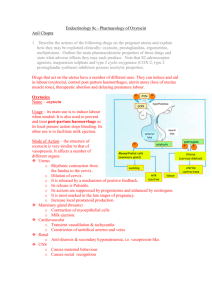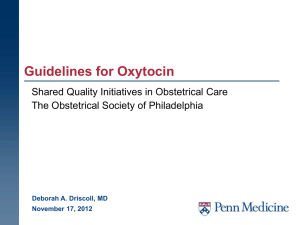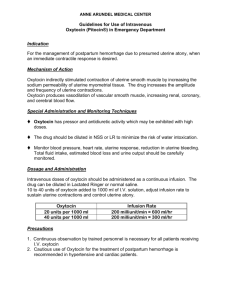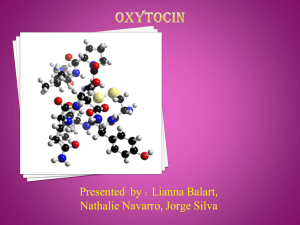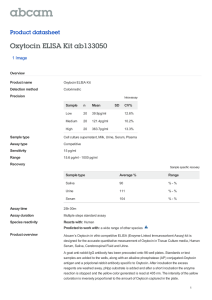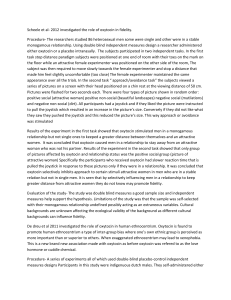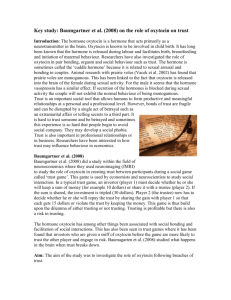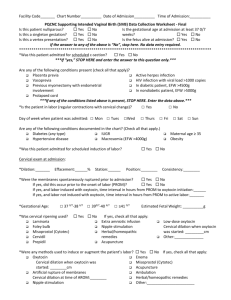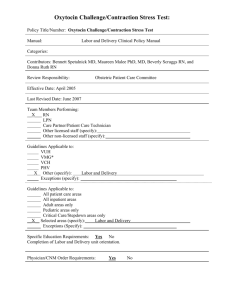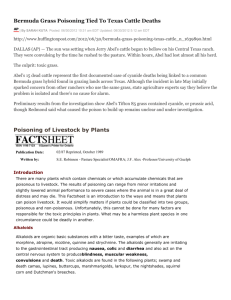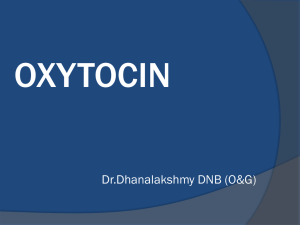Drugs acting on the uterus
advertisement
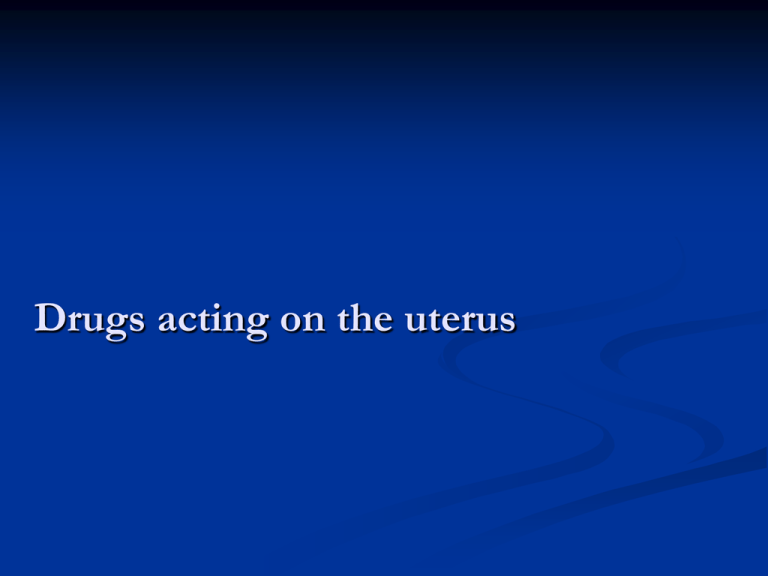
Drugs acting on the uterus I. Uterine stimulants 1. Oxytocin: (nonapeptide=9 a.a peptide) - Contracts the myoepithelial cells of the breast → milk letdown; milk ejection Major stimuli, baby cry and suckling - Contracts the uterus → delivery The uterus is insensitive to oxytocin in early pregnancy but its sensitivity increases with advanced pregnancy reaching maximum at time of delivery - Has slight ADH-like activity - Role in man ??? - - Oxytocin MOA: Surface receptors → stimulation of voltagesensitive Ca++ channels → depolarization of uterine muscles → contractions ↑ intracellular Ca++ ↑ prostaglandin release Clinical uses to oxytocin: - Induction of labor Drug of choice given in units in an I.V infusion - Postpartum hemorrhage, I.M. Ergot alkaloids are better (ergonovine, methylergonovine, syntometrine= oxytocin+ ergometrine) - Breast engorgement, intranasally - Abortifacient, I.V infusion. ≥ 20 weeks of gestation, ineffective in early pregnancy Side effects to oxytocin: - Rupture of the uterus Major and most serious side effect - H2O intoxication and hypertension Due to its ADH-like activity Specific oxytocin antagonist Atosiban, effective in the management of premature delivery 2. Prostaglandins: * Dinoprostone (PGE2) Vaginal pessaries, inserts and gel, tab Abortifacient, induction of labor * Dinoprost (PGF2α) I.V infusion and intramniotic Same uses as dinoprostone * Carboprost (PGF2α) I.M and intramniotic Abortifacient and postpartum hemorrhage * Gemeprost (PGE1) Vaginal pessaries Used to prime the cervix 3. Ergot alkaloids: Ergonovine, Methylergonovine I.M, oral Ergot alkaloids remain the drugs of choice to manage postpartum hemorrhage As compared to oxytocin, ergot alkaloids are more potent, they produce more prolonged and sustained contractions of the uterus and they are less toxic Ergot alkaloids are contraindicated to be used as inducers to delivery (associated with high incidence of fetal distress and mortality) II. Uterine relaxants (Tocolytics) Major clinical use: premature delivery (weeks 20-36) → improve the survival of the newborn 1. β-adrenergic agonists: ↑ cAMP → ↓ cytoplasmic Ca++ * Ritodrine I.V infusion Most widely used * Terbutaline, Oral, S.C, I.V Side Effects to β-adrenergics: Sweating, tachycardia, chest pain… 2. Magnesium sulfate I.V infusion Activates adenylate cyclase and stimulates Ca++ dependent ATPase Uses: premature delivery and convulsions of preeclampsia 3. Progesterone Oral, I.M Dydrogesterone 4. Oxytocin competitive antagonists Atosiban 5. Prostaglandin synthesis inhibitors Indomethacin, Meloxicam 6. Nifedipine ** Major contraindication to tocolytics: fetal distress
